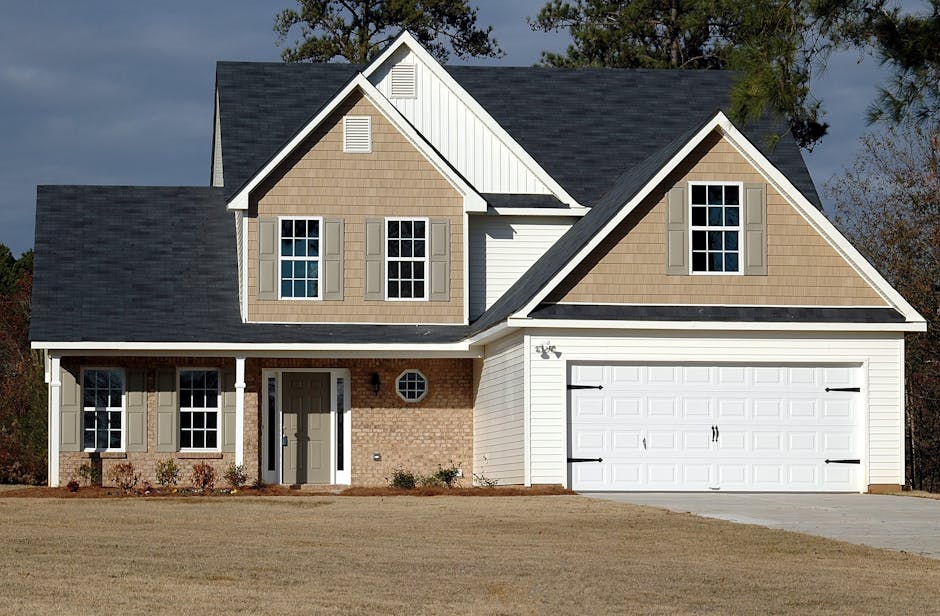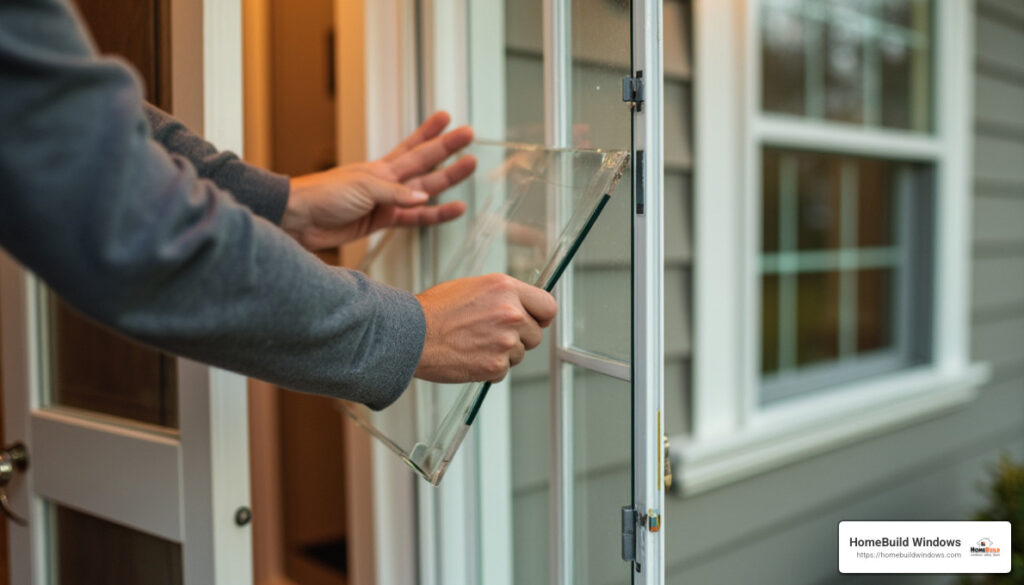Changing exterior door can significantly boost your home’s curb appeal, improve energy efficiency, and even transform the entryway’s aesthetic. For those pondering this upgrade, here’s what you need to know:
- Boost Curb Appeal: A new door can refresh your home’s exterior with minimal investment.
- Improve Energy Efficiency: Choose doors with high R-value and weatherstripping to reduce drafts.
- Consider a DIY Project: If you are handy with tools, replacing a door can be a satisfying and manageable DIY project.
I’m Steve Mlynek. With years of experience in home improvement solutions as the owner of HomeBuild Windows, I emphasize the importance of quality craftsmanship in changing exterior door to lift your home’s appearance and energy performance. Join me as I dig into the next sections on selecting the right door and installation tips.
Choosing the Right Door
When it comes to changing your exterior door, selecting the right one is crucial. The choice affects not just the look but also the energy efficiency and security of your home. Let’s break down the options:
Door Materials
-
Wood: Offers a classic look and can be customized with paint or stain. However, wood doors require regular maintenance to prevent warping and damage from the elements.
-
Fiberglass: Known for durability and low maintenance. These doors resist dents and scratches and can mimic the appearance of wood. Plus, they offer excellent insulation.
-
Steel: Provides great security and is cost-effective. While strong and durable, steel doors can dent and may not offer the same design flexibility as wood or fiberglass.
Prehung Doors vs. Slab Doors
-
Prehung Doors: These come with the door already mounted to a frame. They are ideal for new constructions or when you want to replace both the door and frame. Prehung doors simplify installation, especially if the existing frame is damaged or not square.
-
Slab Doors: Just the door itself, without a frame. A slab door is perfect if your existing frame is in good condition. However, installing a slab door requires precise measurements and alignment with the existing hinges and lockset.
Energy Efficiency
Choosing an energy-efficient door can save on heating and cooling costs. Look for:
-
High R-Value: Indicates better insulation. A higher R-value means your door will keep your home warmer in winter and cooler in summer.
-
Weatherstripping: Seals gaps to prevent drafts, enhancing the door’s thermal performance.
-
Low-E Glass: If your door has glass panels, opt for low-emissivity glass. It reduces heat transfer, keeping your home comfortable year-round.
The right door not only lifts your home’s appearance but also improves its energy efficiency and security. As you plan your door replacement, consider these factors to make an informed choice that meets your needs and budget.
Changing Exterior Door: Step-by-Step Guide
Changing your home’s exterior by changing your exterior door can seem daunting, but with the right steps, it’s a task you can tackle with confidence. Here’s a simple guide to help you through the process.
Step 1: Remove the Old Door
Before you start, gather your tools and ask a friend to assist. Removing the old door requires careful handling to avoid damage.
-
Unscrew Hinges: Open the door and unscrew the hinges. Have someone hold the door as you remove it from the frame.
-
Remove Hardware: Take off the doorknob, locks, and other hardware that you might want to reuse.
-
Detach the Frame: Use a pry bar to carefully remove the old frame. Protect your floors with a drop cloth to prevent scratches.
-
Tidy Up: Once the door and frame are out, clean the area and dispose of any debris.
Step 2: Measure the Door Opening
Accurate measurements are crucial for a smooth installation. Here’s how to measure:
- Height: Measure from the floor to the top of the door jamb.
- Width: Measure across the top, middle, and bottom of the doorway. Use the smallest width for your new door.
- Jamb Width: Measure from the front to the back of the door frame.
Step 3: Install the New Door
With the old door out and measurements taken, it’s time to install the new one.
-
Test-Fit the Door: Before unpacking, double-check the size of your new door against the opening. During installation, keep the door’s retaining brackets in place to hold it closed.
-
Prepare the Sill: Check the condition of the sill area. Level it with shims if necessary. This ensures a snug fit and proper door swing.
-
Install the Frame: Set the new frame into the opening. Use a level to ensure it is plumb and square. Secure it with screws.
-
Hang the Door: Attach the door to the hinges on the frame. Check that it swings freely and aligns with the lockset.
Tools Needed
To make the process smoother, gather these tools:
- Hammer
- Chisel
- Drill/Driver & Bits
- Screwdriver
- Pry Bar
- Level
- Tape Measure
By following these steps, you can successfully change your exterior door, enhancing both the look and efficiency of your home. In the next section, we’ll cover some handy installation tips and tricks to ensure your door is weatherproof and well-aligned.
Installation Tips and Tricks
Installing a new exterior door is more than just fitting it into place. To ensure your door is secure, energy-efficient, and long-lasting, follow these tips and tricks.
Weatherproofing
Weatherproofing is key to keeping the elements out and your home cozy. Use polyurethane caulk around the edges of the door frame. This seals gaps and prevents drafts. Consider adding a drip cap above the door if it’s exposed to rain. This simple addition directs water away, keeping your door dry and protected.
Insulation
Proper insulation around your door helps maintain your home’s temperature. Fill the space between the doorjamb and the framing with minimal expanding foam insulation. This foam expands to fill gaps but won’t warp or damage the frame. After the foam sets, stuff any remaining space with strips of fiberglass insulation for extra protection.
Door Alignment
A well-aligned door not only looks good but also functions smoothly. Use shims to ensure the door is plumb and level. Place shims at the top, middle, and bottom of the latch-side jamb. Once the door is aligned, secure it with screws. Replace one screw in each hinge with a longer, three-inch screw driven into the framing to prevent sagging over time.
Safety Equipment
Working safely is crucial. Always wear safety glasses to protect your eyes from dust and debris. When using power tools, follow the manufacturer’s safety guidelines. If you’re lifting heavy doors or working at heights, ask for help to avoid injury.
By applying these installation tips and tricks, you’ll ensure your new exterior door is weatherproof, well-insulated, and perfectly aligned. With the right precautions, your door will stand strong against the elements and improve your home’s energy efficiency.
In the next section, we’ll answer some frequently asked questions about changing exterior doors, helping you make informed decisions for your home improvement project.
Frequently Asked Questions about Changing Exterior Doors
Can you replace just the door without the frame?
Yes, you can replace just the door, known as a slab door, without replacing the entire frame. This option is ideal if your existing frame is in good condition. When choosing a slab door, ensure that it matches the size of the old door. You might need to trim the new door slightly to fit perfectly, but this is only feasible with materials like wood or fiberglass—not steel. Be cautious, though; if the frame is not square or level, installing just the slab might not resolve alignment issues.
How much does it cost to replace an exterior door?
The cost of replacing an exterior door varies widely based on several factors. A basic slab door can range from $100 to $500, while a prehung door, which includes the frame, typically costs between $150 and $1,000 or more. High-quality materials like solid wood or custom designs will increase the price. Additional costs may include hardware, insulation materials, and labor if you hire a professional. To get a precise estimate, consider the door size, material, and any extra features like sidelights or storm doors.
Is it difficult to change a front door?
Changing a front door can be a manageable DIY project for those with some experience, but it does require precision and patience. The process involves removing the existing door, ensuring the opening is properly prepared, and fitting the new door. If you’re handy with tools and follow instructions carefully, you might find it rewarding. However, if you’re unsure or want to ensure a perfect fit, hiring a professional might be the best choice. Professionals bring expertise, ensuring the door is aligned correctly, weatherproofed, and secure, saving you time and potential headaches.
Conclusion
When it comes to changing your exterior door, choosing the right partner for the job can make all the difference. At HomeBuild Windows, we pride ourselves on offering top-notch service and high-quality products. As an Elite Platinum Pella Certified Contractor, we specialize in providing durable, energy-efficient doors that improve your home’s curb appeal and security.
Our commitment to quality installation ensures that every door fits perfectly, operates smoothly, and stands up to the elements. With Pella’s Limited Lifetime Warranty backing our products, you can have peace of mind knowing your investment is protected.
Whether you’re looking to boost energy efficiency or simply refresh your home’s exterior, our team is here to help. We serve Chicago and its surrounding suburbs, bringing expertise and a personal touch to every project. For more information on our services and to explore options for your home, visit our Door Installation and Replacement page.
Open up new looks and lasting performance with HomeBuild Windows—your trusted partner in changing your home’s entrance.







